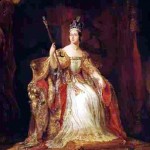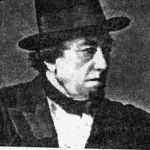Queen Victoria
Category: 19th century The history of England in the reign of Queen Victoria is “political history”, with fewer major wars, international complications, or startling public events, and a greater concentration upon a sequence of legislative acts which profoundly influenced the life of the nation.
The history of England in the reign of Queen Victoria is “political history”, with fewer major wars, international complications, or startling public events, and a greater concentration upon a sequence of legislative acts which profoundly influenced the life of the nation.
Early in the morning of 20 June 1837 the Archbishop of Canterbury and the Lord Chamberlain brought the news of the death of William IV to a girl in Kensington Palace, who once had recorded in a wish “to do what is fit and right”. The great Victorian epoch started. Some have smiled at it, none can laugh it off.
When Victoria, the niece of King William IV and the daughter of Edward, Duke of Kent, and Victoria Mary Louisa of Saxe-Coburg-Saalfeld, a lively and strong-willed girl, ascended the throne, she was only 18 years old. Her youthful sincerity and dignity soon won respect and affection. She found her country well launched on a programme of cautious liberalism. Lord Melbourne, who had become Prime Minister shortly before, was an agreeable gentleman who gained strong influence on the young Queen’s mind. With Melbourne’s help Victoria quickly learned the business of being a queen, but with her strength of mind she was not content to be guided in everything. She insisted beforehand what her Government was doing and made sure that her views were known and her rights respected.
Her marriage to Prince Albert of Saxe-Coburg-Gotha enabled her to increase her influence. In his methodical way he acted as her secretary and confidential adviser and ensured that she was well informed upon matters she discussed with her ministers. At the same time they led a happy domestic life together, and houses at Osborne and Balmoral were bought to give the royal family privacy. Queen Victoria and Prince Albert had nine children, four sons and five daughters: Edward (who later became King Edward VII), Alfred, Duke of Edinburgh and of Saxe-Coburg-Gotha, Arthur, Duke of Connaught, Leopold, Duke of Albany, Victoria (who married the Crown Prince of Prussia and became the mother of the Emperor Wilhelm II), Princess Alice (who married the Grand Duke of Hesse), Princess Helena (Princess Christian), Princess Louise (who married the Duke of Argyll), and Princess Beatrice (who married Prince Henry of Battenberg). Albert’s death in 1861 was naturally a great shock to his loving wife. For some years Queen Victoria lived a retired life though she still kept in close touch with the affairs of her Government. William Ewart Gladstone was unable to bring her out of seclusion, but Benjamin Disraeli persuaded her to make more public appearances.
In her later years she became the symbol of a long and successful reign. Signs of public affection pleased her and she became much easier and more gracious in manner. Victoria was a staunch upholder of proper conduct in family and public life. She had strong prejudices, e.g., against extending education and women’s rights, but also strong humanity. She was critical of any risking of life, whether on railway lines or in mountain climbing. She felt very deeply the death of her husband, and of her son Alfred in 1900 and sympathized with others who suffered such losses.

